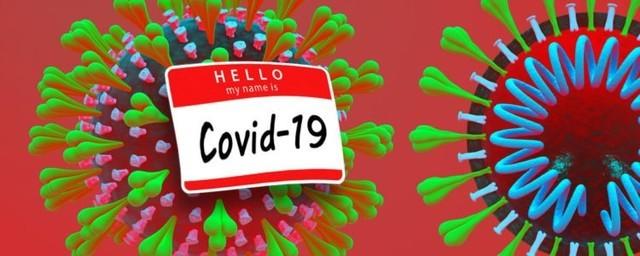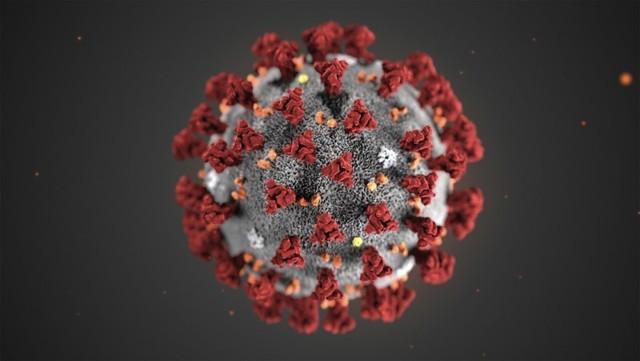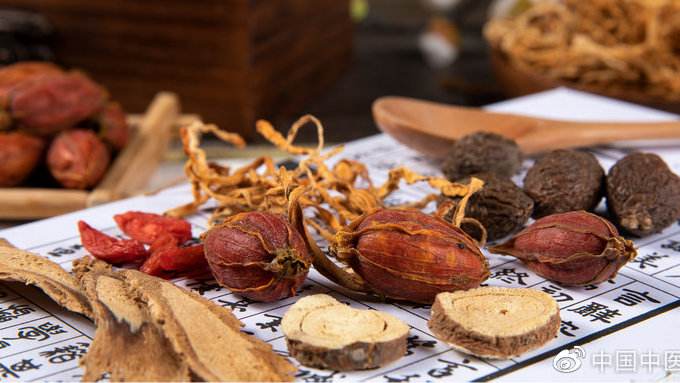Recognition of COVID-19
I). Etiological Characteristics
The novel coronaviruses belong to the β genus. They have envelopes, and the particles are round or oval, often polymorphic, with diameter being 60 to 140 nm. Their genetic characteristics are significantly different from SARS-CoV and MERS-CoV. Current research shows that they share more than 85% homology with bat SARS-like coronaviruses (bat-SL-CoVZC45). When isolated and cultured in vitro, the 2019-nCoV can be found in human respiratory epithelial cells in about 96 hours, however it takes about 6 days for the virus to be found if isolated and cultured in Vero E6 and Huh-7 cell lines.
Most of the knowledge about the physical and chemical properties of coronavirus comes from the research on SARS-CoV and MERS-CoV. The virus is sensitive to ultraviolet and heat. Exposure to 56°C for 30 minutes and lipid solvents such as ether, 75% ethanol, chlorine-containing disinfectant, peracetic acid, and chloroform can effectively inactivate the virus. Chlorhexidine has not been effective in inactivating the virus.
2). Epidemiological Characteristics
(1). Source of infection
Currently, the patients infected by the novel coronavirus are the main source of infection; asymptomatic infected people can also be an infectious source.
(2). Route of transmission
Transmission of the virus happens mainly through respiratory droplets and close contact. There is the possibility of aerosol transmission in a relatively closed environment for a long-time exposure to high concentrations of aerosol. As the novel coronavirus can be isolated in feces and urine, attention should be paid to feces or urine contaminated environment that may lead to aerosol or contact transmission.
(3). Susceptible groups
People are generally susceptible.
3). Pathological changes
Pathological findings from limited autopsies and biopsy studies are summarized below:
(1). Lungs
Variable consolidation is present in the lungs.
The alveoli are filled with fluid and fibrin with hyaline membrane formation. Macrophages and many multinucleated syncytial cells are identified within the alveolar exudates. Type II pneumocytes show marked hyperplasia and focal desquamation. Viral inclusions are observed in type II pneumocytes and macrophages. In addition, there is prominent edema and congestion in the alveolar septa which are infiltrated by monocytes and lymphocytes. Fibrin microthrombi are present. In more severely affected area, hemorrhage, necrosis, and overt hemorrhagic infarction are seen. Organization of alveolar exudates and interstitial fibrosis are also present.
Detached epithelial cell and mucus are present in the bronchi, sometimes mucus plugs are seen.
Hyperventilated alveoli, interrupted alveolar interstitium and cystic formation are occasionally seen.
By electronic microscopy, cytoplasmic 2019-nCoV virions are observed in the bronchial epithelium and type II pneumocytes. Immunostain reveals 2019-nCoV viral immunoreactivity in some alveolar epithelial cells and macrophages and RT-PCR confirms the presence of 2019-nCoV nucleic acid.
(2). Spleen, hilar lymph nodes and bone marrow
The spleen is markedly atrophic with a decreased number of lymphocytes. Focal hemorrhage and necrosis are present. Macrophages proliferation and phagocytosis are present in the spleen. Sparsity of lymphocytes and focal necrosis are noted in lymph nodes.
CD4+ and CD8+ immunohistochemistry highlights a decreased number of T cells in the spleen and lymph nodes. Myelopoiesis is decreased in bone marrow.
(3). Heart and blood vessels
Degenerated or necrosed myocardial cells are present, along with mild infiltration of monocytes, lymphocytes and/or neutrophils in the cardiac interstitium. Shedding of endothelial cells, endovasculitis and thrombi are seen in some blood vessels.
(4). Liver and gall bladder
The liver is dark-red and enlarged. Degeneration and focal necrosis of hepatocytes are found, accompanied by infiltration of neutrophils. The sinusoids are congested. The portal areas are infiltrated by lymphocytes and histiocytes. Microthrombi are seen. The gallbladder is prominently distended.
(5). Kidneys
The kidneys are remarkable for proteinaceous exudates in the Bowman’s capsule around glomeruli, degeneration and shedding of renal tubules epithelial cells, and hyaline casts. Microthrombi and fibrotic foci are found in the kidney interstitium.
(6). Other organs
Cerebral hyperemia and edema are present, with degeneration of some neurons. Necrotic foci are noted in the adrenal glands. Degeneration, necrosis and desquamation of epithelium mucosae of variable degree are present in the esophageal, stomach and bowel.
4). Clinical Characteristics
(1). Clinical manifestations
Based on the current epidemiological investigation, the incubation period is one to 14 days, mostly three to seven days.
The main manifestations include fever, fatigue and dry cough. Nasal congestion, runny nose, sore throat, myalgia and diarrhea are found in a few cases. Severe patients develop dyspnea and/or hypoxemia after one week and may progress rapidly to acute respiratory distress syndrome, septic shock, refractory metabolic acidosis, coagulopathy, multiple organ failure etc. It is noteworthy that for severe and critically ill patients may only present with moderate to low fever, or even no fever at all.
Some children and neonatal patients may have atypical symptoms, presented with gastrointestinal symptoms such as vomiting and diarrhea, or only manifested as lethargy and shortness of breath.
The patients with mild symptoms usually do not develop pneumonia but have low fever and mild fatigue.
Based on our experience, most patients have good prognosis and a small percentage of patients are critically ill. The prognosis for the elderly and patients with chronic underlying diseases is poorer. The clinical course of pregnant women with NCP is similar to that of
non-pregnant patients of the same age. Symptoms in children are relatively mild.
(2). Laboratory tests
General findings
In the early stages of the disease, peripheral WBC count is normal or decreased and the lymphocyte count is decreased. Some patients have elevated liver enzymes, lactate dehydrogenase (LDH), muscle enzymes and myoglobin. Elevated troponin is seen in some critically ill patients. Most patients have elevated C-reactive protein and erythrocyte sedimentation rate and normal procalcitonin. In severe cases, D-dimer increases and peripheral blood lymphocytes progressively decrease. Severe and critically ill patients often have elevated inflammatory factors.
Pathogenic and serological findings
(a) Pathogenic findings: Novel coronavirus nucleic acid can be detected in nasopharyngeal swabs, sputum, lower respiratory tract secretions, blood, feces and other specimens using RT-PCR and/or NGS methods. It is more accurate if specimens are obtained from lower respiratory tract (sputum or air tract extraction). The specimens should be submitted for testing as soon as possible after collection.
(b) Serological findings: NCP virus specific IgM becomes detectable around 3-5 days after onset; IgG reaches a titration of at least 4-fold increase during convalescence compared with the acute phase.
(3). Chest imaging
In the early stage, imaging shows multiple small patchy shadows and interstitial changes, more apparent in the
peripheral zone of lungs. As the disease progresses, imaging shows multiple ground glass opacities and infiltration in both lungs. In severe cases, pulmonary consolidation may occur. However, pleural effusion is rare.
Traditional Chinese Medicine treatment of COVID-19
This disease belongs to the category of plague in traditional Chinese medicine (TCM), caused by the epidemic pathogenic factors. According to the different local climate characteristic and individual state of illness and physical conditions, the following treatment Protocol may vary. The use of over-pharmacopoeia doses should be directed by a physician.
1) During medical observation
Clinical manifestation 1: fatigue and gastrointestinal discomfort
Recommended Chinese patent medicine: Huoxiang Zhengqi capsules (pills, liquid, or oral solution)
Clinical manifestation 2: fatigue and fever
Recommended Chinese patent medicine: Jinhua Qinggan granules, Lianhua Qingwen capsules (granules), Shufeng Jiedu capsules (granules), Fangfeng Tongsheng pills (granules)
2) During clinical treatment (confirmed cases)
(1) Lung cleansing & detoxifying decoction
Scope of application: It is suitable for light, moderate and severe patients, and can be used reasonably in combination with the actual situation of patients in the treatment of critically ill patients.
Recommended prescription: Ephedra 9g, Zhigancao 6g, Almond 9g, Gypsum 15-30g (fried first), Guizhi 9g, Zixie 9g, Zhuling 9g, Baizhu 9g, Zhiling 15g, Bupleurum 16g, Scutellaria baicalensis 6g, and Pinellia 9g , Ginger 9g, aster 9g, winter flower 9g, shoot dry 9g, asarum 6g, yam 12g, coriander fruit 6g, tangerine peel 6g, aquilegia 9g.
Suggested use: Traditional Chinese medicine decoction pieces for decocting in water. One dose per day, twice in the morning and evening (forty minutes after a meal), take with warm water, and three doses a course.
If conditions permit, the patient can take half a bowl of rice soup each time after taking the medicine, and can take up to one bowl if the patient has a dry tongue and is deficient in bodily fluids. (Note: If the patient does not have a fever, the amount of gypsum should be little. If having a fever or strong heat, the amount of gypsum can be increased). If the symptoms improve but do not fully recover, then take the second course of treatment. If the patient has special conditions or other underlying diseases, the prescription of the second course of treatment can be modified based on the actual situation and the medicine should be discontinued when the symptoms disappear.
(2) Mild cases
(a) Cold dampness and stagnation lung syndrome
Clinical manifestations: fever, fatigue, sore body, cough, expectoration, chest tightness, suffocation, loss of appetite, nausea, vomiting, sticky stools. Tongue has thin fat tooth mark or is faint red, and the coating is white thick rot or white greasy and the pulse is moisten or slippery.
Recommended prescription: Raw ephedra 6g, raw gypsum 15g, almond 9g, loquat 15g, gardenia 15g, Guanzhong 9g, Dilong 15g, Xu Changqing 15g, Huoxiang 15g, Peilan 9g, Cangzhu 15g, Yunling 45g, Atractylodes 30g, Jiao Sanxian 9g each , Magnolia officinalis
15g, betel coconut 9g, yarrow fruit 9g, ginger 15g.
Suggested use: one dose daily, boiled with 600ml water, take it three times at morning, noon and evening before meal.
(b) Dampness and heat-accumulation lung syndrome
Clinical manifestations: low or no fever, slight chills, fatigue, heavy head and body, muscle soreness, dry cough, low phlegm, sore throat, dry mouth, do not want to drink more, or accompanied by chest tightness, no sweat or sweating, Or vomiting and loss of appetite, diarrhea or sticky stool. The tongue is reddish, and the coating is white, thick and greasy or thin yellow, and the pulse is slippery or sloppy.
Recommended prescription: Betel nut 10g, apple 10g, Magnolia 10g, Zhimu 10g, scutellaria baicalensis 10g, Bupleurum 10g, red peony 10g, forsythia 15g, artemisia annua 10g (decocted later), 10g of green leaves, 10g of green leaves, 5g of raw licorice.
Suggested use: one dose daily, boiled with 400ml water, take it twice at morning and evening.
(3) Moderate cases
(a) Dampness and stagnation lung syndrome
Clinical manifestations: fever, low cough and sputum, or yellow sputum, suffocation, shortness of breath, bloating, and constipation. The tongue is dark red and fat; the coating is greasy or yellow and the pulse is slippery or stringy.
Recommended prescription: raw ephedra 6g, bitter almond 15g, raw gypsum 30g, raw coix seed 30g, grass root 10g, patchouli 15g, artemisia annua 12g, Polygonum cuspidatum 20g, verbena 30g, dried reed root 30g, gardenia 15g 15g of orange red, 10g of raw licorice.
Suggested use: one dose daily, boiled with 400ml water, take it twice at morning and evening.
(b) Cold dampness lung syndrome
Clinical manifestations: low fever, low body temperature, or no heat, dry cough, low sputum, fatigue, chest tightness, nausea, or nausea. The tongue is pale or red, and the coating is white or greasy, and the veins are pulsating.
Recommended prescription: Atractylodes lancea 15g, Chenpi 10g, Magnolia 10g, Aquilegia 10g, grass fruit 6g, raw ephedra 6g, Zhihuo 10g, ginger 10g, betel nut 10g.
Suggested use: one dose daily, boiled with 400ml water, take it twice at morning and evening.
(4) Severe cases
(a) Plague poison and lung-closing syndrome
Clinical manifestations: fever, flushing, cough, yellowish phlegm, or blood in sputum, wheezing, shortness of breath, tiredness, fatigue, dryness and stickiness, nausea, food loss, poor stool, and short urination. Red tongue, yellow greasy coating, slippery pulses.
Recommended prescription: Raw ephedra 6g, almond 9g, raw gypsum 15g, licorice 3g, fragrant fragrant 10g (back), Magnolia 10g, atractylodes 15g, grass fruit 10g, pinellia 9g, Poria 15g, raw rhubarb 5g (back) 10g, gardenia 10g, red peony 10g.
Suggested use: one or two doses daily, boiled with 100-200ml water, take it 2-4 times, oral or nasal feeding.
(b) Syndrome of flaring heat in qifen and yingfen
Clinical manifestations: Hot fever, thirst, shortness of breath, shortness of breath, blurred vision, or spotted rash, or vomiting blood, bleeding, or convulsions in the limbs. Tongue ridges have few or no moss, and the pulse sinks finely, or floats large and counts.
Recommended prescription: 30-60g gypsum (fried first), 30g of Zhimu, 30-60g of raw land, 30g of buffalo horn (fried first), 30g of red sage, 30g of black ginseng, 15g of forsythia, 15g of paeonia, 6g of peony 12g, gardenia 15g, raw licorice 6g.
Suggested use: 1 dose per day, decoction, first decoct gypsum and buffalo horn, then apply other pieces, 100ml-200ml each time, 2-4 times a day, orally or nasally.
Recommended Chinese patent medicines: Xiyanping injection, Xuebijing injection, Reduning injection, Tanreqing injection, Xingnaojing injection. Drugs with similar efficacy can be selected according to individual conditions, or can be used in combination according to clinical symptoms. Traditional Chinese medicine injection can be used in combination with traditional Chinese medicine decoction.
(5) Critical cases (syndrome of inner blocking causing collapse)
Clinical manifestations: dyspnea, dyspnea, asthma or need mechanical ventilation, fainting, irritability, cold sweating, dark purple tongue, thick or dry moss, large floating roots.
Recommended prescription: 15g of ginseng, 10g of Heishun tablets (decoct first), 15g of dogwood, delivered with Suhexiang Pill or Angong Niuhuang Pill.
For patients on mechanical ventilation with abdominal distention or constipation: 5-10g of Dahuang. For patients with human-machine asynchronization: 5-10g of Dahuang and 5-10g of Mangxiao while administering sedatives and muscle relaxants.
Recommended Chinese patent medicines: Xuebijing injection, Reduning injection, Tanreqing injection, Xingnaojing injection, Shenfu injection, Shengmai injection, Shenmai injection. Drugs with similar efficacy can be selected according to individual conditions, or can be used in combination according to clinical symptoms. Traditional Chinese medicine injection can be used in combination with traditional Chinese medicine decoction.
Note: Recommended usage of Chinese medicine injections for severe and critical cases
The use of traditional Chinese medicine injections follows the principle of starting from a small dose and gradually adjusting the dosage according to the instructions of the drug.
The recommended usage is as follows:
Viral infection or combined mild bacterial infection: 0.9% sodium chloride injection 250ml plus Xiyanping injection 100mg bid, or 0.9% sodium chloride injection 250ml heated Duning injection 20ml, or 0.9% sodium chloride injection 250ml plus Tanreqing injection 40ml bid.
High fever with disturbance of consciousness: 250ml of 0.9% sodium chloride injection and 20ml bid of Xingnaojing injection.
Systemic inflammatory response syndrome or/and multiple organ failure: 250ml of 0.9% sodium chloride injection and 100ml of Xuebijing injection.
Immunosuppression: 250ml of 0.9% sodium chloride injection and 100ml bid of Shenmai injection.
Shock: 250ml of 0.9% sodium chloride injection plus 100ml bid of Shenfu injection.
(6) Convalescent period
(a) Lung and spleen qi deficiency syndrome
Clinical manifestations: shortness of breath, fatigue, fatigue, anorexia, nausea, fullness, weak stool, and uneasiness. The tongue is pale and greasy.
Recommended prescription: French Pinellia 9g, Chenpi 10g, Codonopsis 15g, Sunburn Astragalus 30g, Stir-fried Atractylodes 10g, Poria 15g, Huoxiang 10g, Amomum villosum 6g (later), and Licorice 6g
Suggested use: 1 dose per day, boiled with 400ml of water, twice a day at morning and evening.
(b) Qi and Yin deficiency syndrome
Clinical manifestations: Fatigue, shortness of breath, dry mouth, thirst, palpitations, sweating, poor appetite, low or no lever, dry cough and little sputum; dry tongue, fine or weak pulses.
Recommended prescription: North and south radix salviae 10g, 15g ophiopogonis, 6g American ginseng, 6g schisandra, 6g gypsum l5g, 10g light bamboo leaves, 10g mulberry leaves, 15g reed root, 15g salviae miltiorrhiza, 6g raw liquorice.
Suggested use: 1 dose per day, boiled with 400ml of water, twice a day at morning and evening.
(Released by National Health Commission & State Administration of Traditional Chinese Medicine)
[Related Reading]:
Traditional Chinese Medicine: an effective treatment for 2019 novel coronavirus pneumonia (NCP)



